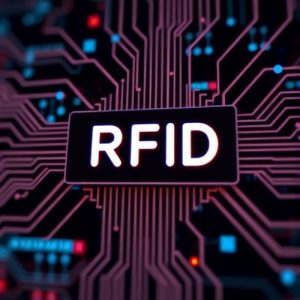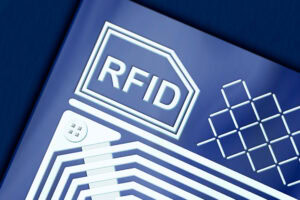RFID Technology (Radio-Frequency Identification) is now ubiquitous in our daily lives. From access cards to company badges, and inventory tags, RFID chips make tracking and managing objects and data easier. All of this is highly regulated, particularly by ISO standards. However, this ease of use comes with an urgent need: securing information considered sensitive that passes through these radio identification devices.
RFID technology security challenges
Card Cloning
One of the most common security issues with RFID is card cloning. Malicious individuals can copy the information stored on an RFID chip and use it to gain access to restricted areas or steal sensitive data. Security relies on the ability to protect these access sensors.
Data Interception
RFID signals are broadcast using radio frequencies, which means they can be intercepted by remote attackers. This opens the door to industrial espionage and the compromise of sensitive data. Protecting this data requires robust security systems.
Replay Attacks
Replay attacks involve recording a valid RFID signal and replaying it to gain unauthorized access. This method can be used to access secure premises or sensitive systems. Security solutions must, therefore, include means to prevent such attacks, whether they are high-level or not.
Nexess’ response to these challenges: our security solutions
NEXESS offers a comprehensive range of products, items, and accessories to protect your sensitive data. The judicious use of sensors, actuators, and security protocols is essential to ensure effective protection.
Data Encryption
Data encryption is essential to secure information stored on an RFID chip. It makes data unreadable to anyone without the proper decryption key or code.
Use of Robust Security Protocols
Security protocols, such as mutual authentication, can prevent replay attacks by verifying the identity of RFID devices and the reader. Make sure RFID devices use robust security protocols to guard against attacks.
Physical Access Control
Combining RFID technology with enhanced physical access controls is an effective strategy. For example, doors equipped with RFID electronic locks can be linked to security cameras to monitor access and user authentication.
Encryption Key Management
Effective encryption key management is crucial to ensure the security of RFID data. Keys must be securely stored and regularly updated to prevent vulnerabilities.
Awareness and Training
Employee awareness of RFID security is essential. Ensure that users understand the risks associated with RFID technology and best practices to avoid security breaches.
Regular Updates
RFID device manufacturers continuously release security updates to address discovered vulnerabilities. Be sure to keep your RFID devices up to date to benefit from the latest protections.
When choosing RFID technology, make sure to understand the techniques, the different types of needs for your specific application, and the advantages that each technology can offer to achieve the best possible results.
RFID Applications
RFID has applications in various fields, including supply chain management, access control, retail management, and livestock tracking.
How Passive RFID Works
The UHF frequency was selected for RFID due to its advantages, particularly its ability to operate effectively over long distances and through obstacles. Unlike HF, UHF frequency is less affected by metal and provides more robust readings.
Choosing UHF Frequency for RFID
The UHF frequency was selected for RFID due to its advantages, particularly its ability to operate effectively over long distances and through obstacles. Unlike HF, UHF frequency is less affected by metal and provides more robust readings.
RFID Security at NEXESS
NEXESS uses UHF frequency for its RFID devices. However, the security of data stored on these chips is crucial. Measures such as encryption, mutual authentication, and physical access control are in place to ensure data security.
In conclusion, RFID security is essential to protect your sensitive data. Understand the challenges, choose the technology that suits your needs, and take steps to secure your RFID devices. NEXESS provides reliable solutions to help you safeguard your data and use RFID safely.
Feel free to contact us to learn more about our secure RFID solutions. Your security and that of your data are our top priorities.
References:
Wiser Systems – Utilizing UWB with RFID MokoBlue – BLE vs. RFID vs. UWB: What Are the Differences?
Rieback, M. R., Crispo, B., & Tanenbaum, A. S. (2006). The evolution of RFID security. IEEE Pervasive Computing, 5(1), 62-69.
Mahmood, Rand, & Alhamdani, Wasim. (2011). Is RFID technology secure and private?.
Mitrokotsa, Aikaterini, Rieback, Melanie, & Tanenbaum, Andrew. (2010). Classifying RFID attacks and defenses. Information Systems Frontiers, 12, 491-505.
Decarli, N., Guidi, F., & Dardari, D. (2016). Passive UWB RFID for Tag Localization: Architectures and Design. IEEE Sensors Journal, 16(5), 1385-1397.
Baghaei Nejad, Majid, Zou, Zhuo, Mendoza, David, & Zheng, Li-Rong. (2009). Remotely UHF-Powered Ultra Wideband RFID for Ubiquitous Wireless Identification and Sensing.


 Français
Français


